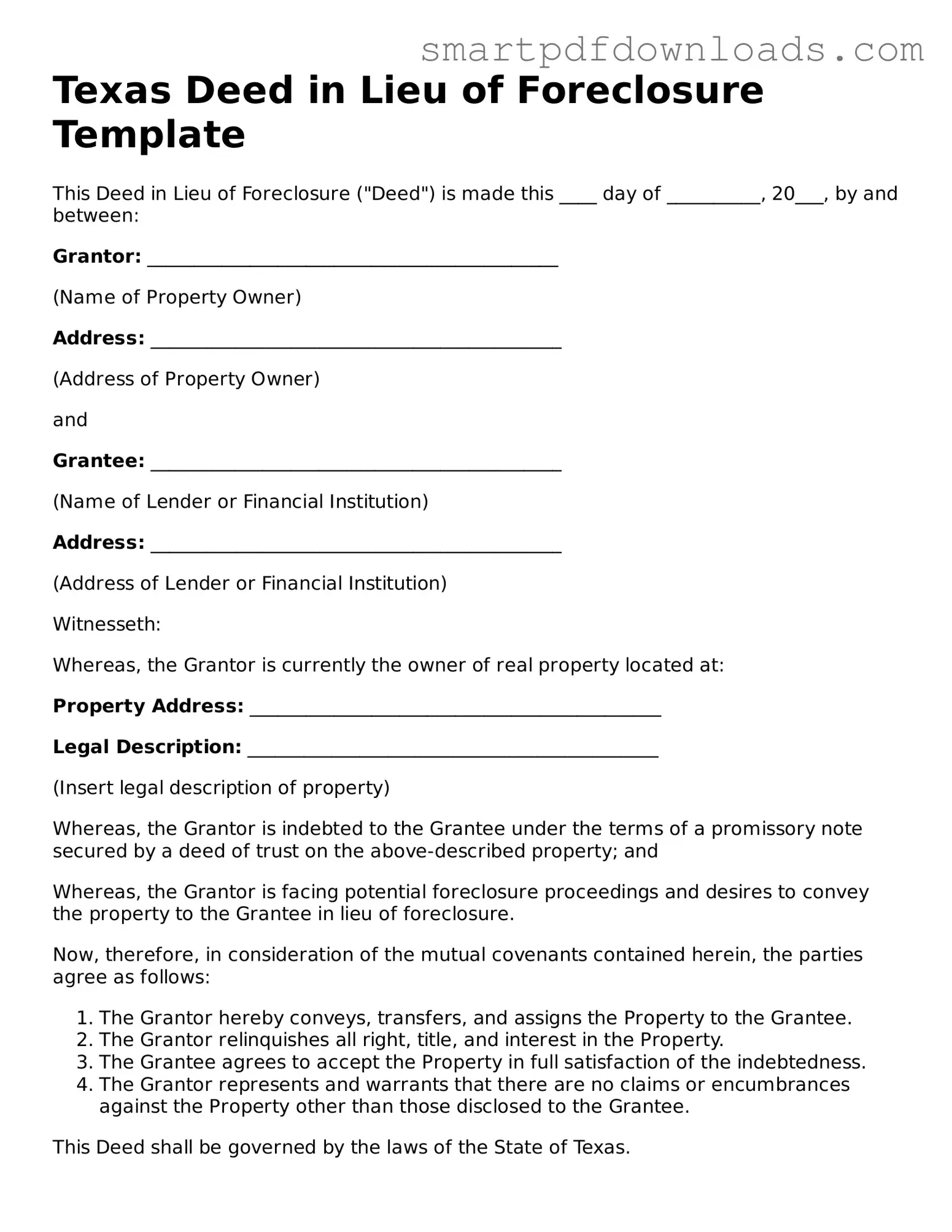Texas Deed in Lieu of Foreclosure Template
This Deed in Lieu of Foreclosure ("Deed") is made this ____ day of __________, 20___, by and between:
Grantor: ____________________________________________
(Name of Property Owner)
Address: ____________________________________________
(Address of Property Owner)
and
Grantee: ____________________________________________
(Name of Lender or Financial Institution)
Address: ____________________________________________
(Address of Lender or Financial Institution)
Witnesseth:
Whereas, the Grantor is currently the owner of real property located at:
Property Address: ____________________________________________
Legal Description: ____________________________________________
(Insert legal description of property)
Whereas, the Grantor is indebted to the Grantee under the terms of a promissory note secured by a deed of trust on the above-described property; and
Whereas, the Grantor is facing potential foreclosure proceedings and desires to convey the property to the Grantee in lieu of foreclosure.
Now, therefore, in consideration of the mutual covenants contained herein, the parties agree as follows:
- The Grantor hereby conveys, transfers, and assigns the Property to the Grantee.
- The Grantor relinquishes all right, title, and interest in the Property.
- The Grantee agrees to accept the Property in full satisfaction of the indebtedness.
- The Grantor represents and warrants that there are no claims or encumbrances against the Property other than those disclosed to the Grantee.
This Deed shall be governed by the laws of the State of Texas.
IN WITNESS WHEREOF, the Grantor has executed this Deed as of the day and year first above written.
Grantor Signature: __________________________________
Date: ______________________
Grantee Signature: __________________________________
Date: ______________________
STATE OF TEXAS
COUNTY OF ___________________
Before me, the undersigned authority, on this day personally appeared _____________________ (name of Grantor), known to me to be the person whose name is subscribed to the foregoing instrument, and acknowledged to me that they executed the same for the purposes and considerations therein expressed.
Given under my hand and seal of office this ______ day of __________, 20___.
Notary Public Signature: ____________________________
Notary Public Printed Name: ____________________________
My Commission Expires: ____________________________
